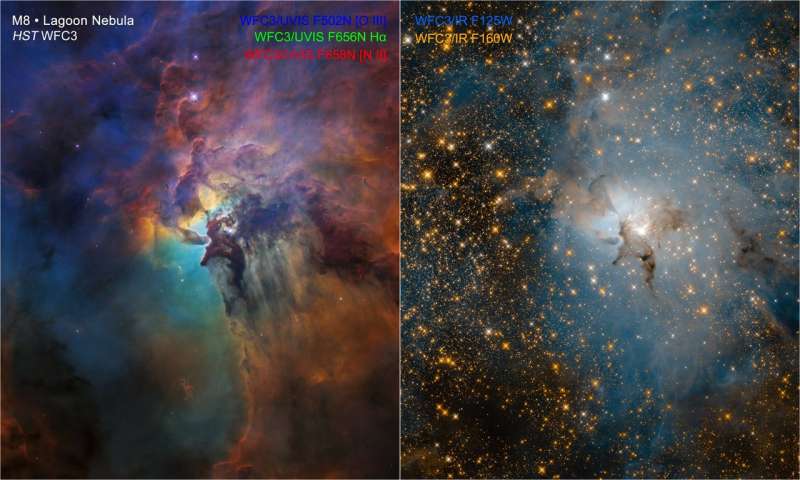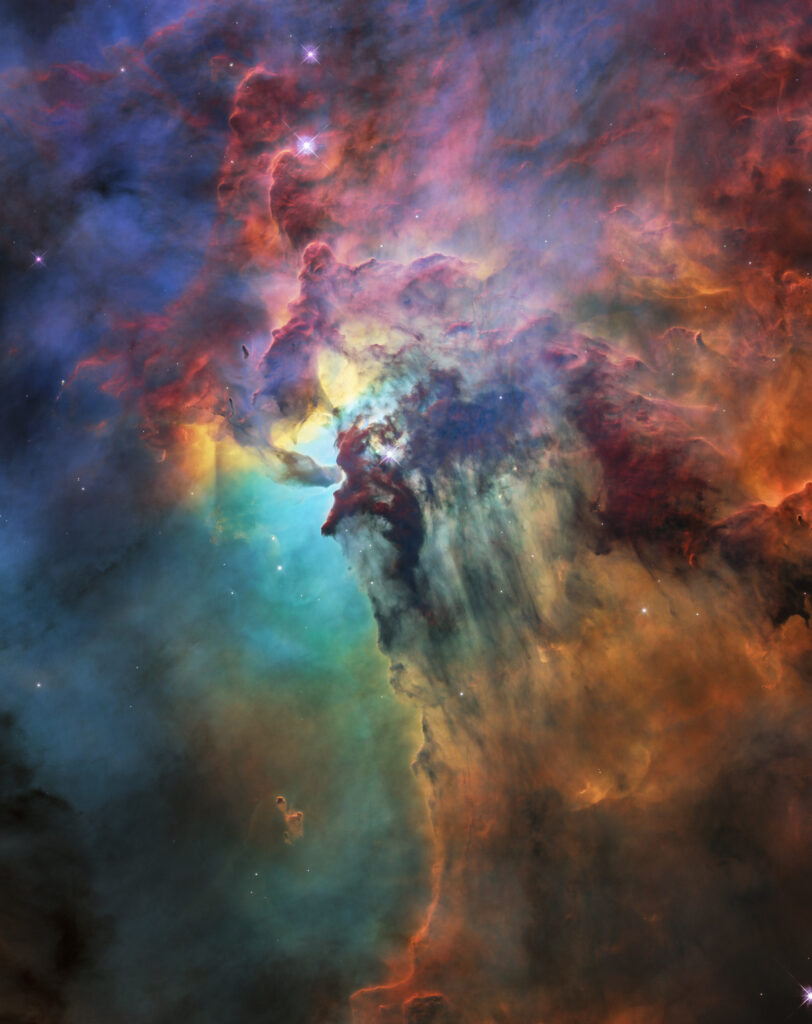papers and links (updated)
The Lagoon Nebula, or Messier 8 (M8), is a large interstellar cloud classified as an emission nebula and an H II region. The nebula is located in Sagittarius Constellation, within the Milky Way Galaxy. It lies in the direction of the galaxy’s centre. The nebula’s designation in the New General Catalogue is NGC 6523.
The Lagoon Nebula is the brightest, largest nebula in Sagittarius, a constellation that is home to a number of notable nebulous regions. M8 is estimated to lie at a distance between 4,000 and 6,000 light years from Earth. It spans a region 110 by 50 light years in size.
When observed through a telescope or binoculars, the nebula appears gray, while time-exposure photos reveal a pink colour. The structure of the nebula, resembling that of a tornado or funnel, is a result of ultraviolet light coming from a hot O-type star that heats and ionizes gases on the nebula’s surface
https://www.constellation-guide.com/lagoon-nebula-messier-8


https://phys.org/news/2018-04-hubble-views-stellar-nursery.html
Papers and Journals
https://arxiv.org/pdf/2010.09365.pdf Context. Messier 8 (M8), one of the brightest H II regions in our Galaxy, is powered by massive O-type stars and is associated with recent and ongoing massive star formation. Two prominent massive star-forming regions associated with M8 are M8-Main, the particularly bright part of the large-scale H II region (mainly) ionized by the stellar system Herschel 36 (Her 36) and M8 East (M8 E), which is mainly powered by a deeply embedded young stellar object (YSO), the bright infrared (IR) source M8E-IR.
https://ui.adsabs.harvard.edu/abs/1997AAS…190.4114C/abstract The spectacular WFPC2 images of the Lagoon Nebula have attracted much attention since our STScI press release in January 1997. The level of detail revealed by Hubble was rarely obtained before for a giant stellar nursery except for the Orion Nebula.

